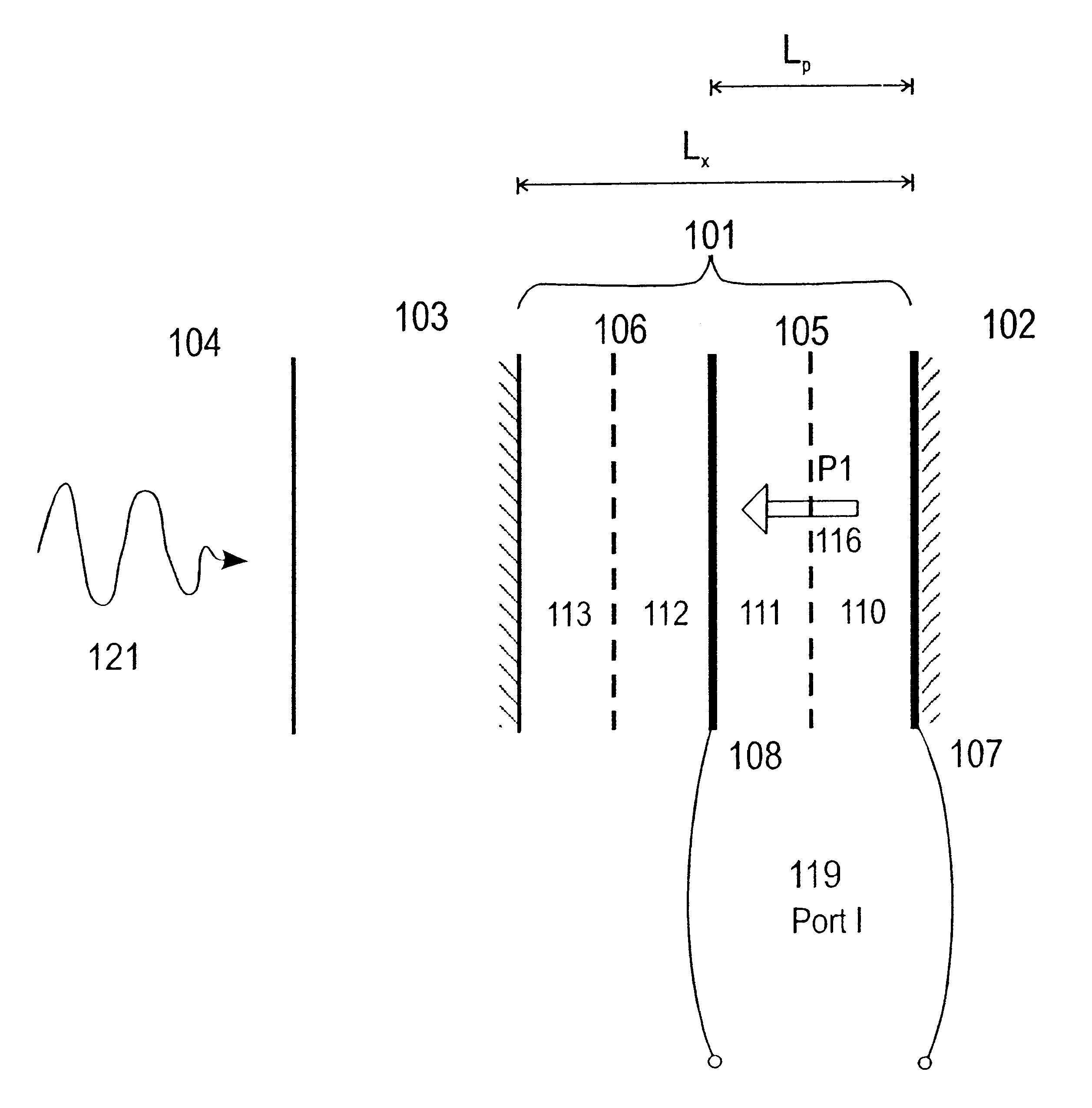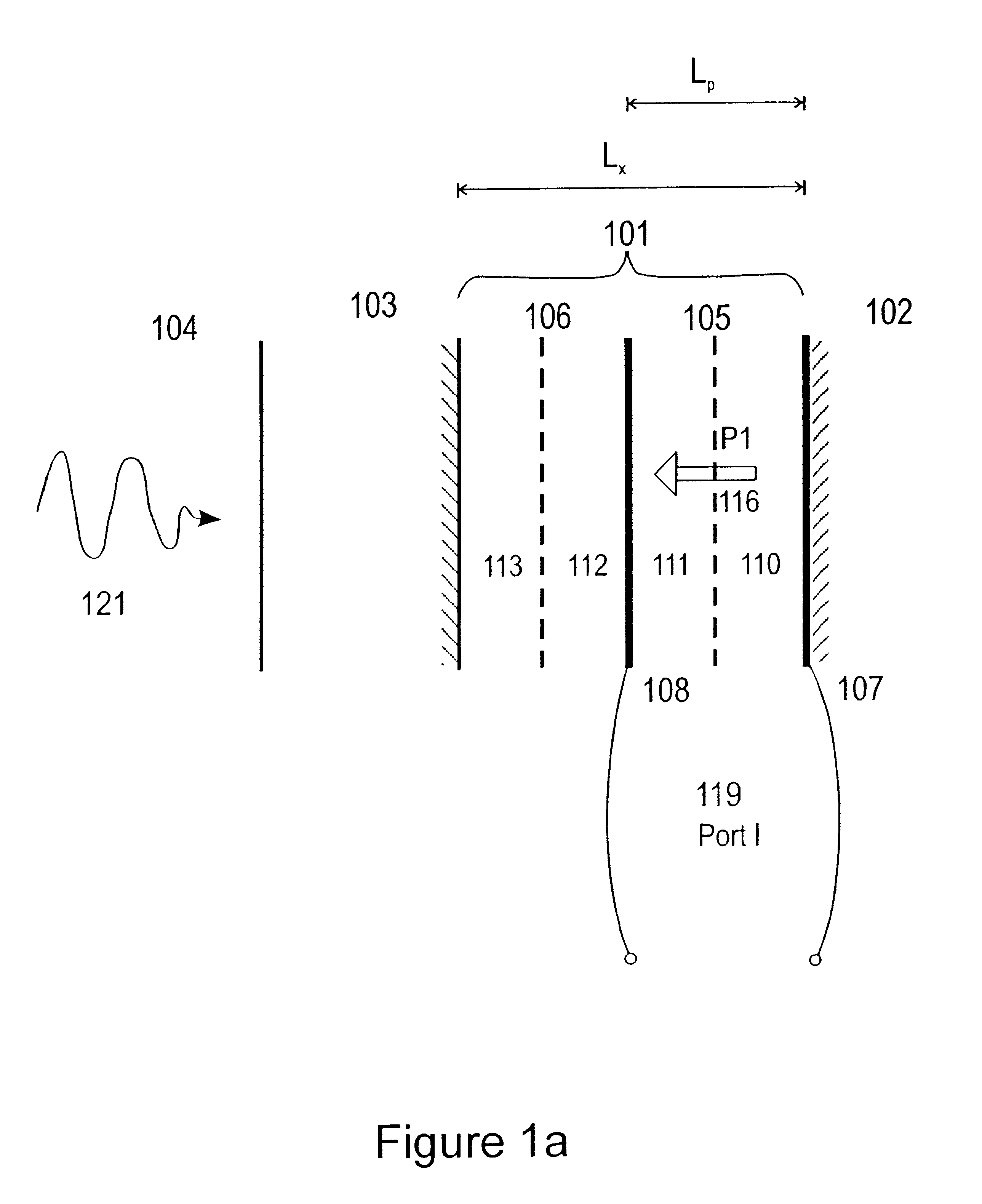High frequency and multi frequency band ultrasound transducers based on ceramic films
a multi-frequency band, ultrasound transducer technology, applied in the field of high frequency and multi-frequency band ultrasound transducers based on ceramic films, can solve the problems of brittle plate, limited self-supporting plate thickness, difficult and expensive problems
- Summary
- Abstract
- Description
- Claims
- Application Information
AI Technical Summary
Benefits of technology
Problems solved by technology
Method used
Image
Examples
Embodiment Construction
Typical embodiments according to the invention are shown in FIGS. 1a-1c, where all Figures. show a composite transducer plate 101 made of several layers of ferroelectric, ceramic films and possibly films of other material with characteristic impedance close to that of the ceramic films. In FIGS. 1a and 1b it is shown for sake of example 4 layers 110-113 of films, while in FIG. 1c it is shown 6 layers 110-115. The composite plate with characteristic impedance Z.sub.x is mounted on a backing material 102 with characteristics impedance Z.sub.B. The backing material absorbs waves so that waves reflected from the back side of the backing can be neglected. The backing material hence appears to have infinite thickness. Back impedance matching layers can possibly be mounted between the composite ceramic plate and the backing, to improve sensitivity in selected frequency bands according to known principles. The resonant nature of such matching limits the total bandwidth, and in the following...
PUM
 Login to View More
Login to View More Abstract
Description
Claims
Application Information
 Login to View More
Login to View More - R&D
- Intellectual Property
- Life Sciences
- Materials
- Tech Scout
- Unparalleled Data Quality
- Higher Quality Content
- 60% Fewer Hallucinations
Browse by: Latest US Patents, China's latest patents, Technical Efficacy Thesaurus, Application Domain, Technology Topic, Popular Technical Reports.
© 2025 PatSnap. All rights reserved.Legal|Privacy policy|Modern Slavery Act Transparency Statement|Sitemap|About US| Contact US: help@patsnap.com



